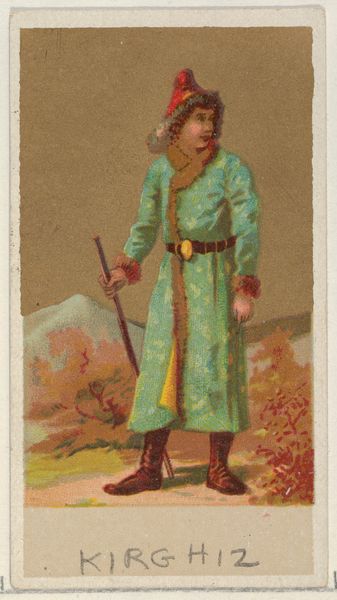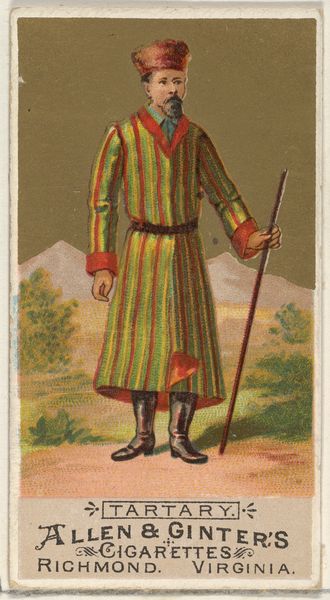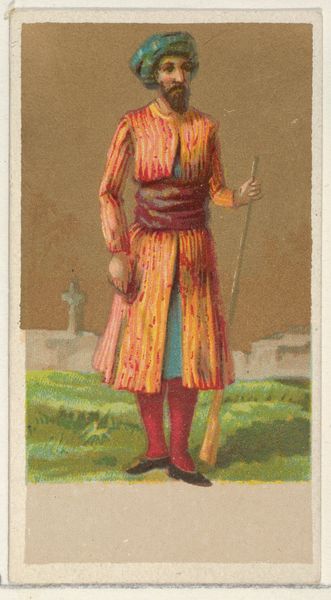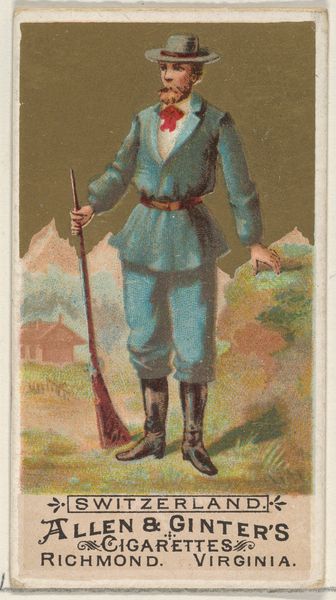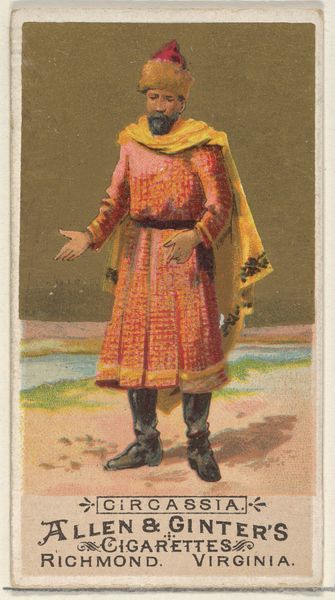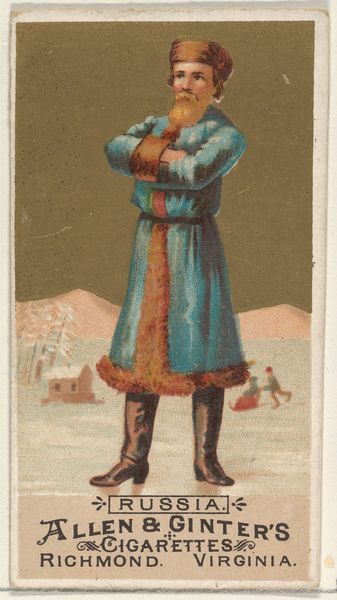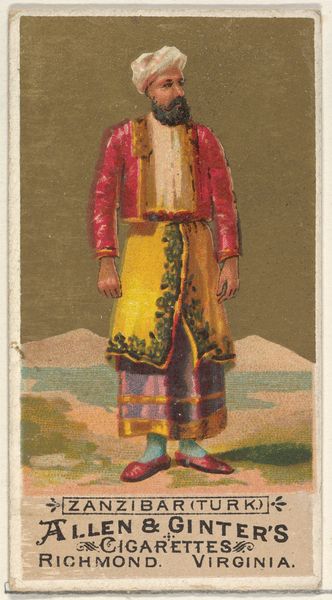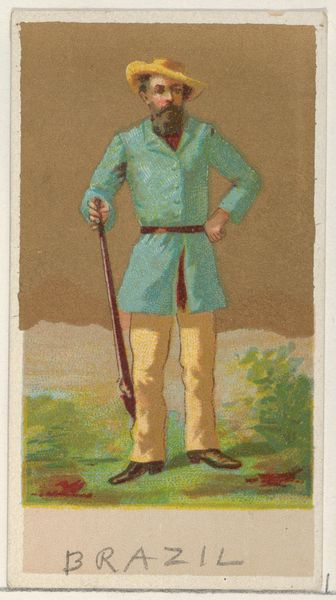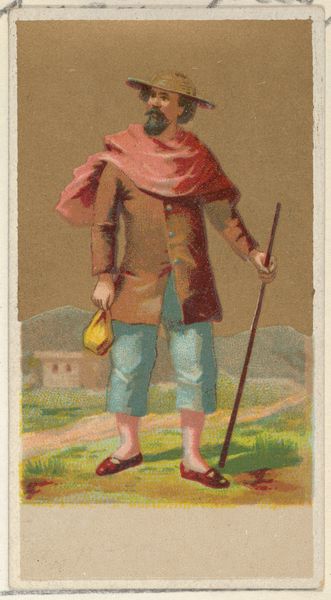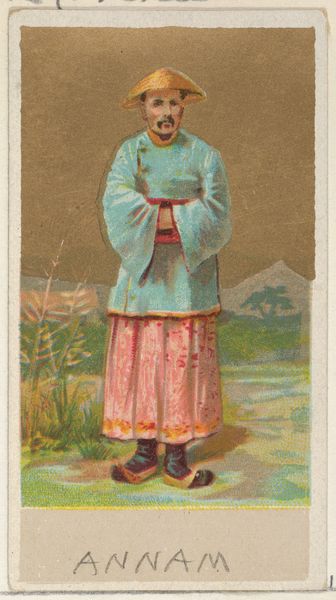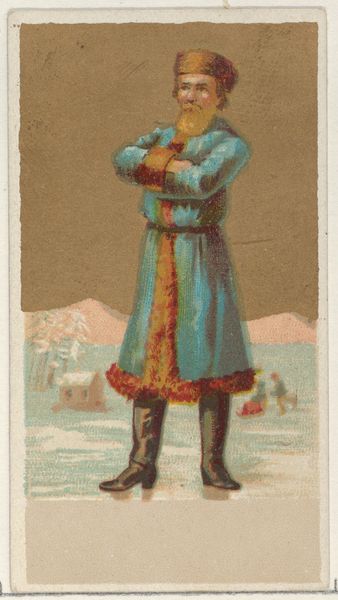
Kirghiz, from the Natives in Costume series (N16) for Allen & Ginter Cigarettes Brands 1886
0:00
0:00
drawing, print, watercolor
#
portrait
#
drawing
#
water colours
# print
#
watercolor
#
coloured pencil
#
orientalism
#
history-painting
#
realism
Dimensions: Sheet: 2 3/4 x 1 1/2 in. (7 x 3.8 cm)
Copyright: Public Domain
Editor: This is "Kirghiz" from 1886, one of the "Natives in Costume" series by Allen & Ginter, a cigarette brand. It's a watercolor print, and the detail is surprisingly good for such a small piece. The man's robe and hat look so carefully rendered, almost like fabric samples. What do you see in this piece, beyond its immediate representation? Curator: What strikes me is the object itself. These weren't created as art in the traditional sense, but as trade cards included with cigarettes. It highlights the connection between material culture, global trade, and consumerism. Who were Allen & Ginter, and why this exoticized portrayal of a "Kirghiz"? Editor: Allen & Ginter were major tobacco manufacturers. These cards were meant to be collected, traded...almost like early baseball cards. It seems the depiction exoticizes and others this individual. Is the artwork supporting exploitative capitalist structures? Curator: Precisely! It’s the casual consumption of "exotic" cultures reduced to collectible commodities that interests me. Look at the watercolor: it simulates the *feel* of rich textiles and crafted materials. The artistic skill elevates a simple advertisement. It’s designed to seduce the consumer on multiple levels, right? And where did they source their material for these images? How did they produce and distribute the images themselves? Editor: Ah, I see your point! The card itself, the *thing*, is deeply embedded in these 19th-century structures of colonialism and expanding markets. It encourages cultural consumption, so how might the creation and material contribute? Curator: Exactly! It’s easy to focus on the “art,” but we must understand the system that made it possible. From sourcing materials like paper and pigment, to the labor involved in mass production, to its eventual circulation... Editor: That’s fascinating. It’s a powerful reminder that even seemingly innocuous objects are tied to broader social and economic realities. The materials truly tell a story. Curator: Indeed! And in doing so, complicate the story.
Comments
No comments
Be the first to comment and join the conversation on the ultimate creative platform.
